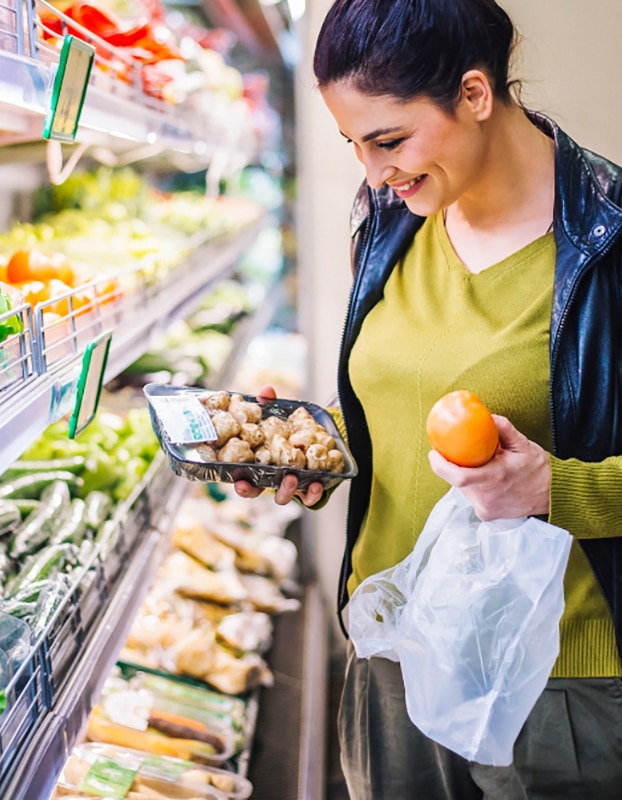Easily preparing tasty recipes with vegetables requires a bit of organization, the right cooking method, and an understanding of the importance of seasons. Here you can discover a few simple ways to prepare vegetables the way you like, whether that is crunchy or golden.
What’s cooking?
For most people, their first instinct is to boil a vegetable. It has the advantage of softening up the fiber, making the vegetables melt in your mouth. However, it also destroys certain vitamins, especially if the vegetable is boiled for a long time in a large amount of water. Using a variety of cooking methods is the best way to ensure that you get a good meal and quality nutrition. There is an ideal way to prepare each vegetable:
- Boiling: cover the pot to shorten cooking time and use a small amount of water. This is a practical way to cook dried beans or pods, green peas, green beans, turnips, fennel, artichokes, asparagus, and crosnes. It is not ideal for eggplants, zucchini, and tomatoes.
- Steaming: this is the best way to cook most vegetables because it does not negatively affect taste, texture or nutrient content. It is also very natural and light since it uses no fat. It is ideal for carrots, cauliflower, and broccoli, among others.
- Sautéing: if you like caramelized vegetables, then sautéing vegetables in a little oil is perfect for you! This method works well with zucchini, eggplants, onions, Brussels sprouts, and endives, and for wilting spinach.
- Baking: this is ideal for flavorful and perfectly cooked vegetables. This method works particularly well with beets, zucchini, eggplants, carrots, peppers, onions, tomatoes, celery, cauliflower, winter squash, parsnip, and chestnuts, among others.
- Stir-frying: with little to no butter or oil, a wok heats up quickly. It is best to cut your vegetables into large, regular pieces and not cook them for too long. This method is ideal for soybean sprouts, peppers, zucchini, mushrooms, and more.
- Frying: this method should only be used occasionally. Don’t forget to carefully dry vegetables off after cooking them. This method works well for zucchini, eggplants, vegetable tempuras and more.
To preserve vitamins: not a minute to lose!
Some vitamins like vitamin C and vitamin B9 are particularly sensitive to heat, air, and light. To help protect them, follow these tips:
- Choose very fresh vegetables. Buy vegetables that are in season and grown in your area, and then eat them immediately.
- When preparing your vegetables, don’t peel them and don’t cut them up too early or they might oxidize. A dash of lemon juice on your raw vegetables should help prevent this from happening.
- Also avoid soaking your vegetables in water (either hot or cold) because a lot of vitamins are left behind in the water.
- Finally, reducing cooking time helps the vegetables retain more vitamins. Generally speaking, don’t cook your vegetables in advance.
Cooking has advantages, too
Cooking vegetables has advantages as well as disadvantages. For example, it can help your body assimilate certain protective compounds. This is true for beta-carotene (or provitamin A) and lycopene which are both absorbed in larger quantities by your body when the vegetable you’re eating (whether that’s a pepper, tomato, or carrot) has been cooked. Adding a fat like olive oil or butter also helps absorption. Lutein, a powerful antioxidant present in spinach, broccoli and corn, is similarly easy to assimilate when cooked. And when it comes to dried legumes, cooking is absolutely necessary to make them edible and digestible.
The advantages of ready-to-use vegetables
Don’t underestimate the nutritional qualities of ready-to-use vegetables. Flash freezing and canning are always carried out immediately after harvesting, when the vegetables are perfectly ripe. Buying frozen vegetables can even help you receive more vitamins from your food. This is because flash freezing vegetables is a rapid process that occurs just a few hours after they are harvested, so the vegetables are still rich in nutrients. Don’t thaw them before cooking and enjoy them immediately.
Preserve the colors!
Here’s a chef’s tip: to preserve the beautiful natural colors of vegetables, it is important to blanch them before cooking. Here’s how to do it:
- Put them in boiling water for 30 seconds
- Immediately cool them by putting them in a bowl with cold water and ice cubes
- Then cook your vegetables as you normally would. This way, your spinach or green beans will stay very green.
- Then you can prepare them the way you like.



 Dandelion greens
Dandelion greens  Onions
Onions  Vegetable garden: growing rocket
Vegetable garden: growing rocket 









